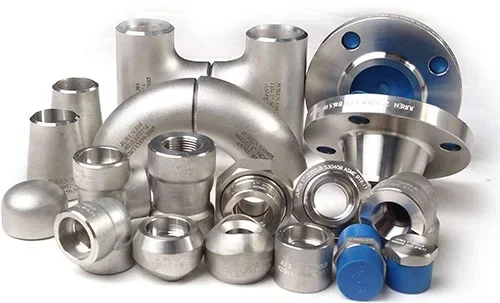Application classification of pipe fittings
Pipe fittings refer to various elements used to connect, convert, control, and support piping systems, and are an integral part of piping systems. The application range of pipe fittings is very wide, and can be used in the petroleum, chemical industry, electric power, metallurgy, shipbuilding, construction, and other industries. According to different application scenarios and functions, it can be divided into various types.

1. Connecting pipe fittings
Connecting pipe fittings are components that connect two or more pipes together, mainly including elbows, tees, crosses, flanges, casings, etc. Elbows are pipe fittings used to change the direction of pipes, usually with different angles such as 45 degrees, 90 degrees, and 180 degrees. A tee is a component that connects three pipes together, usually, there are two kinds of equal diameter tee and different diameter tee. The four-way is a component that connects four pipes together, usually, there are two kinds of equal-diameter four-way and different-diameter four-way. Flange is a commonly used element for connecting pipes. It can connect two pipes together or connect pipes to equipment. Sleeve is a special component for connecting pipes, it is usually used to connect two pipes of different diameters.
2. Conversion pipe fittings
Conversion pipe fittings are components that convert the diameter, wall thickness, or shape of the pipe, mainly including flares, shrinks, reducers, reducers, etc. Flaring is an element that increases the diameter of a pipe and is usually used to connect two pipes of different diameters. Shrinkage is a component that reduces the diameter of a pipe and is usually used to connect two pipes of different diameters. A reducer is a component that connects two pipes of different diameters. It can connect the two pipes together and keep the fluid flowing. A reducer is an element that gradually changes the diameter of a pipe, and is usually used for transitional sections in piping systems.
3. Control fittings
Control pipe fittings are components used to control the flow, pressure, temperature, and other parameters of the fluid in the pipeline system, mainly including globe valves, regulating valves, safety valves, check valves, etc. The stop valve is a component used to control the flow of fluid in the pipeline, which can cut off or open the flow of fluid. A regulating valve is a component used to regulate the flow of fluid in a pipeline, and it can adjust the flow of fluid as required. The safety valve is a component used to protect the pipeline system. It can automatically open when the pressure in the pipeline is too high to protect the safety of the pipeline system. The check valve is a component used to prevent the backflow of fluid in the pipeline, which can ensure that the fluid can only flow in one direction.
4. Support pipe fittings
Supporting pipe fittings are components used to support the piping system, mainly including booms, brackets, compensators, etc. A boom is an element used to suspend a pipe in the air, usually for long spans of pipe. A bracket is an element used to support a pipe, usually for short spans. The compensator is a component used to compensate the expansion and contraction deformation of the pipeline due to temperature changes, which can ensure the stability and safety of the pipeline system.
In short, the application range of pipe fittings is very wide, and different types of pipe fittings play different roles in the piping system. When choosing, it is necessary to choose the appropriate one according to the specific application scenario and function, so as to ensure the normal operation and safety of the pipeline system.
Fasteners In Steel Accessories
Variety Types of Bolts And Nuts






